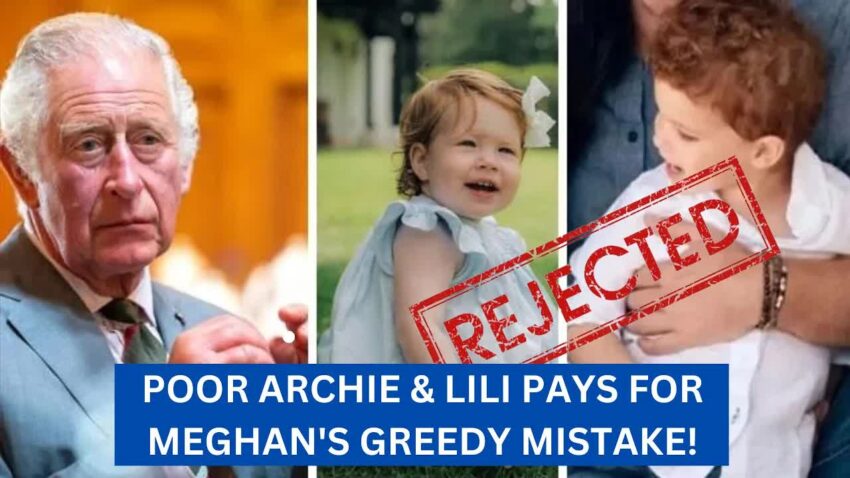Prince Harry and Meghan Markle recently held a christening ceremony for their daughter, Lilibet Mountbatten-Windsor, in Montecito.
Following the event, a statement from the couple’s spokesperson revealed that the children, 21-month-old Lilibet and three-year-old Archie Mountbatten-Windsor, would be officially recognized as Princess Lilibet of Sussex and Prince Archie of Sussex in formal settings.
This announcement was accompanied by an update on Buckingham Palace’s website, which now lists the siblings as sixth and seventh in line to the throne.
According to a spokesperson for Meghan and Harry, the children’s titles have been established as a birthright since their grandfather’s reign.
This decision aligns with the 1917 letters patent issued by King George V, which grants the prince and princess titles to the offspring of a monarch’s sons.
Although Archie and Lilibet technically inherited these titles after Queen Elizabeth II’s passing in September, there has been uncertainty surrounding their use and potential protocol changes under King Charles III’s reign.
Buckingham Palace refrained from disclosing specific details about the new titles, emphasizing the importance of focusing on mourning the late Queen.
Sources close to the royal family suggest that the future of Archie and Lilibet’s titles may be influenced by upcoming events, such as Harry’s forthcoming book and their television projects.
Reports indicate that discussions between Charles and Harry regarding the titles were finalized prior to the new year, predating the release of Harry’s memoir.
While the palace had not previously acknowledged Archie and Lilibet’s titles publicly, recent developments suggest that the children will be referred to as prince and princess.
However, it is important to note that this designation does not automatically grant them the style of “His/Her Royal Highness” (HRH), as this privilege is typically bestowed by the reigning monarch.
In the case of Meghan and Harry, the Queen had previously opted against allowing them to use the HRH honorifics before their names.
Comparisons can be drawn to the 2012 letters patent issued after Prince William and Kate Middleton’s wedding, which declared that all of William’s future children would hold prince or princess titles.
This change in protocol also included adjustments to the order of succession, ensuring gender equality among royal heirs.
The ongoing discussions surrounding Archie and Lilibet’s titles have sparked debates among royal watchers, with some questioning the motives behind the Sussexes’ decisions.
As the royal family navigates these intricacies, the public remains curious about the implications of Archie and Lilibet’s official titles.
The evolving dynamics within the monarchy, coupled with Meghan and Harry’s endeavors, continue to fuel speculation and intrigue.
Share your thoughts on whether the titles signify a strategic move by the Sussexes in the comments below.
Stay tuned for more updates on royal news and analysis as the saga unfolds.
Thank you for joining us, and until next time, farewell.
